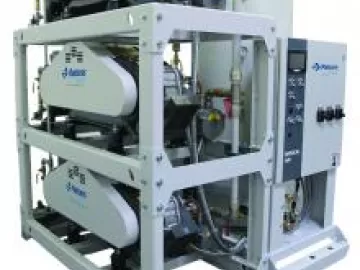Standardization of Automation Components Pays Off at New Biotest AG Plasma Fractionation Plant
Blood plasma is an indispensable resource in the production of life-saving medicines. It is also in high demand on global markets. To make more efficient use of this valuable commodity, Biotest AG developed a new large-scale production plant in Dreieich, Germany, for plasma fractionation capable of obtaining five instead of the previous three products from a single liter of blood plasma. As part of its strategy, Biotest AG worked with Festo to standardize automation components used at the plant, resulting in simplified installation and maintenance.




